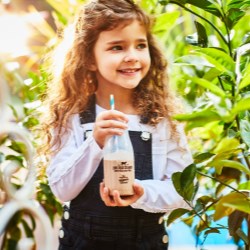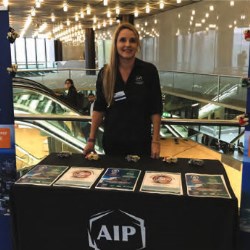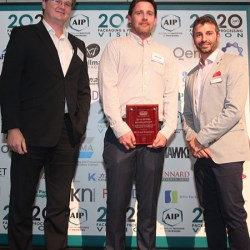If this is your company, CONTACT US to activate Packbase™ software to build your portal.


Pierre Pienaar, Education Director of the Australian Institute of Packaging and vice president – education for the WPO, has been elected as the next president of the World Packaging Organisation (WPO). Pienaar will take office in January 2018 when current president Tom Schneider’s term ends.
WhatPackaging? spoke to Pienaar shortly after the announcement...
Congratulations Mr Pienaar. After you take office from January, what will be your role and goal at WPO as a president?
One of the main targets is to encourage and develop of education in some or other form of packaging. WPO understands that education can change the world and the packaging industry in a more positive way. Together with education, we will work in other areas like reduction of food water, reduction in poverty, improved lifestyle for millions, greater interest from countries to participate in this revolution, improved global participation in finding solutions and improved WPO global image. One focus with different sets of wings attached to it should lead to that main focus taking flight and lifting all the attachments with it.
One of the themes at interpack was packaging 4.0. How do you explain what is packaging 4.0?
Looking at the future in a good connected factory environment, Industry 4.0 encompasses automation, communication and manufacturing technologies, which in essence is putting all in place for a new industrial revolution. We will require good networking and integration between companies.
This type of partnership relies on transparency to ensure consistency throughout from supplier to user to consumer. We know that maximum productivity and enhanced product customisation in a mass production environment are central goals of Industry 4.0. In many ways, the highly innovative packaging industry already operates according to these principles. Some filling and packaging lines already are producing products with personalised labelling and customised containers.
How does design thinking facilitate better packaging?
Design of good packaging is the backbone to success in packaging technology. Success in all spheres, from product/pack acceptability at convertor stage, to user then to consumer, as well as all that lies in between, i.e. supply and logistics. Having just completed three years as WPO vice president of education and lecturing all around the world, I have seen and experienced all sorts of packaging from highly sophisticated packaging to simple food wrapped in banana leaves. But one aspect that remains in the forefront of my mind, and which I remind my students of, is: ‘design with the end in mind’.
As an example, in design there are scientific methods which are well known by most of us since our education is based on science and its methods. But what about design-specific knowledge? Design thinking embodies methods and activities that a person applies during the process of solving a practical problem under technological and economic constraints. It is an iterative process that facilitates innovation by a succession of approximations in which building prototypes for testing is at the core. This approach is typically what is taught only to engineering and packaging students but many more could benefit from it.
What are the developments on the material science front that are relevant for the packaging industry? We continue our efforts in light weighting, looking at better ways of using what we have, more efficient ways of manufacturing packaging, changing designs that deliver more economical packaging at good pricing.
But I believe we need to discover a material that gives us the required barrier property that can also be recyclable and/or biodegradable. We need to leave this planet in a good shape for our grandchildren and their children. I believe we may have the answer in nanotechnology. Fortunately, there is a substantial amount of research work being done in this technology.
What are your views on the Indian packaging market?
I think India has such a vibrant packaging community, where all those involved in packaging innovation are trying to do their best, but in many cases it is driven by the consumer in wanting more for less. This places a huge strain on developing packaging that can offer extended shelf life at the expense of recyclability. Currently only laminate structures can offer that requirement of shelf life extension. India is a huge market with innovative people trying to find the ultimate pack. In recent years I have found good examples of new packaging ideas coming out of India and not only in materials but in the equipment side of the packaging industry as well. I would not be surprised if someone into the future India finds the nanotechnology solution to our packaging woes.
How do you look at the packaging education in India vis-a-vis that in the USA and for that matter education in emerging economies? What are the shortcomings?
This is a great question that needs some discussion. I have been involved in packaging education for the past 30 years. I am so pleased to see so many people in India wanting to become more educated in packaging. This is fantastic to witness. I have visited India a number of times and each time I am encouraged by the enthusiasm of the Indian people in them knowing that education will take them further in the development of their careers. Because of sheer numbers, India has many folks needing education and, at the same time.
I am blown away when I hear of how many have post graduation degrees in packaging. There is room for so much more development and India knows this and is doing something about it. In my travels around the world where I meet Indian folk, they can certainly hold their own against anyone from any other country when it comes to packaging technology and its development opportunities.
Can packaging solve the world hunger problem?
Currently, somewhere between 30% and 35% of global food is wasted or lost. We have been told, from various sectors, that if we could achieve zero food wastage then no person on the planet would need to go hungry.
In many instances poor or sometimes incorrect packaging is the culprit. I believe, we in the packaging industry, can go a long way in helping less food to be wasted to ensure that less people will have to starve. In instances there is food being packed in incorrect material, in other cases the material could have been enhanced to extend the shelf life of the product.
WPO has recently supported Messe Düsseldorf in their participation in the Save Food Initiative, at Interpack 2017. This is a joint initiative of the Food and Agriculture Organisation of the United Nations (FAO), the United Nations Environment Programme (UNEP), Messe Düsseldorf and Interpack, the leading global trade fair for packaging and processes.
Where do you think is packaging industry headed on these three fronts: food wastage; sustainability (recycling or biodegradable) and scope for downgauging?
There is a constant drive by the packaging industry to improve packaging, to extend shelf life and thus help reduce food wastage. Packaging will not be able to eliminate food wastage in total but we can go a long way in assisting the reduction of food wastage.
The aim is to ultimately produce a commercially acceptable material that can extend shelf life but also able to be recyclable and/or biodegradable. I think a possible key to the success could lie in nanotechnology.
What impressed you at interpack?
There were many technology developments impacting packaging design, enabling the packaging designer to produce improved and more meaningful pack formats. Then there were new coding technologies invisibly embedded in on-pack graphics and activated by a smartphone app that could create new pathways for consumer engagement.
I was also impressed with the advanced ink technology used in digital printing to create a more personalised experience for the consumer. And a world’s first to manufacturer a new speciality paper with a mineral oil barrier integrated directly in the paper, as well as including heat sealing properties. Lastly, there were various ideas to reduce food wastage, be that in material, design and equipment.



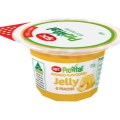


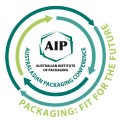
.jpg)


















